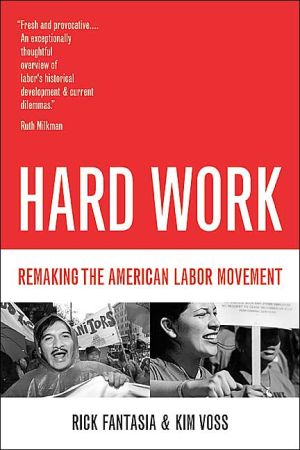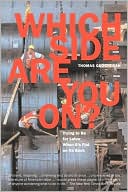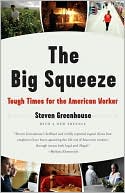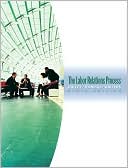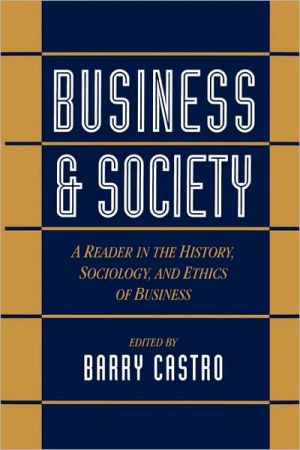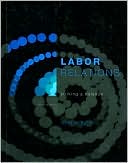Hard Work: Remaking the American Labor Movement
This concise overview of the labor movement in the United States focuses on why American workers have failed to develop the powerful unions that exist in other industrialized countries. Packed with information and valuable analysis, Hard Work: Remaking the American Labor Movement explores historical perspectives, examines social and political policies, and brings us inside today's unions, providing an excellent introduction to labor in America.
Search in google:
"Timely and smart, this book should be read by everyone interested in a possible revival of the American labor movement. The working week has gotten longer, more workers hold multiple jobs, gaps between the pay of workers and of CEOs have widened, and employers and their allies in government have attacked both unions and regulations to promote occupational health and safety. Fantasia and Voss demonstrate not only this bad news, but that new thinking and creative responses have made some headway too."—Craig Calhoun, President, Social Science Research Council"Fantasia and Voss make an important and persuasive argument for how and why U.S. employment and labor policies set the standard for pushing down wages, labor rights, and working conditions throughout the world. They put forward an enormous challenge to the U.S. labor movement, but one that needs to be met, not just for workers and unions in the U.S., but for their labor and community allies around the globe."—Kate Bronfenbrenner, Director of Labor Education Research, Cornell University"Fantasia and Voss's long-awaited book offers a fresh and provocative perspective on the possibilities and limits of labor union revitalization in the U.S. They persuasively argue that the ascent of neoliberalism is both cause and consequence of organized labor's decline, and contribute as well to the long-standing debate over American exceptionalism in the context of the new century. Hard Work is an exceptionally thoughtful overview of labor's historical development and current dilemmas."—Ruth Milkman, Director, UC Institute for Labor and Employment
Hard Work\ Remaking the American Labor Movement \ \ By Rick Fantasia Kim Voss \ University of California\ Copyright © 2004 Regents of the University of California\ All right reserved.\ ISBN: 0-520-24090-1 \ \ \ Chapter One\ Why Labor Matters\ The Underside of the "American Model"\ In the American popular imagination and in the mainstream press, the United States is presented as being superior to Western Europe in almost every way. Newspaper articles boast that the American economy is a miraculous jobs machine and disparage the high unemployment rates in Europe; they emphasize high productivity growth and scorn "Eurosclerosis." They tout the unprecedented levels of economic creativity unleashed by the "new economy" of the 1990s and criticize Europeans for clinging to outmoded ways of life. In addition, Americans believe, and are repeatedly told, that they enjoy the highest standard of living and have more job opportunities than any other country (in addition to being the most free people on earth and living in the most democratic of all societies).\ Especially in the booming 1990s, American leaders and economic experts used this supposed superiority to proclaim American neoliberalism as a model that the rest of the world should follow. From the elegant meeting halls of the G7, to corporate boardrooms, to ambassadorial suites, European countries were told that they could not hope to compete in the new global economy unless they admitted the error of their ways, scaled back their antiquated welfare states, and became-like the United States-more fiscally responsible, more friendly to business and entrepreneurship, and more flexible. Poorer countries throughout the world were lectured even more relentlessly, while being mercilessly squeezed by the "structural adjustment" policies of the U.S.-led International Monetary Fund.\ Despite the recent troubles of the U.S. economy, the conviction that U.S.-style neoliberalism remains the best economic model, both here and abroad, goes virtually unquestioned. We are told repeatedly that America's current economic and social woes will be solved by more of the same policies that purportedly generated the boom in the first place: more deregulation, further privatization, and greater tax cuts (especially for the wealthiest Americans).\ We contend that perceptions of U.S. superiority, even during the boom years, have been largely an optical illusion, and that the American model is not all that it is cracked up to be. In fact, the "new economy" is not very different from the old and U.S. job creation has not been particularly noteworthy or distinct from that in many European countries.\ What is truly distinctive about the United States when compared to Western Europe is a lack of social provisions-such as national health insurance, universal child care, and paid parental leave-as well as scandalously high levels of poverty and inequality. In fact, most working-class Europeans have a better standard of living than most working-class Americans.\ European families are often better off than their American counterparts in large part because a historical weakness and a narrowness of vision have prevented American labor from effectively challenging the power of U.S. capital within the American political and economic system. This weakness undergirds the emergence of neoliberalism as the dominant political discourse today in the United States and allows U.S. capital to attempt to impose the American model on the rest of the world.\ But the U.S. labor movement is not static. Today it is undergoing a fitful reinvention, to emerge out of its weakest point in fifty years. The movement is now positioning itself to organize and mobilize against the neoliberal present, to become what it never has been before-a genuine counterweight to the power of U.S. capital. The struggle is crucial and gave us good reason to write this book. Our goal is to train the reader's ear to interpret the sound of labor in U.S. society, for the changes being attempted within the labor movement can be fairly considered to be among the most important social developments that U.S. society has seen in decades. As weak and unfit as they are, American unions are nevertheless the most important potential social defense against a dystopian future.\ The Heart of Darkness at the Center of the "New" Economy\ In the United States the business press, along with a veritable army of journalists, academics, and politicians who are in thrall to business, have long been involved in the painstaking work of projecting an image of capitalism as much larger than itself, as something transcendent. Nowhere has this been more evident than with regard to what is variously called "high technology," the "information economy," and "e-commerce," terms designating the broad application of computer technologies to business activities. This sector, which even before its recent decline was a less materially significant part of the U.S. economy than the promotional hyperbole ever allowed, has been portrayed as a world comprised of "smart workers" (rather than mindless drones), of "clean production" (rather than dirty, smoke-belching factories), and as a genuine meritocracy (clever entrepreneurial inventiveness is valued above inherited wealth or social standing). The "new economy" is thus often presented as an Elysian field of economic creativity in which the felt unpleasantness of actual economic activity and its accompanying negative social effects have somehow been overcome. Totally obscured in this presentation is the pervasiveness of cheap and insecure labor.\ The one thing the so-called New Economy has seemed able to produce most abundantly has been tales about its own invincibility, tales that are reinforced by the endless stories of young internet entrepreneurs suddenly finding themselves awash in unimaginable riches. Such narratives have become a standard part of a literature of envy that continues to feed a seemingly endless fascination with the personal net worth of those who are, almost literally, capable of purchasing the planet. With breathless reverence, journalists for newspapers and magazines, both on- and off-line, have manufactured heroic tales of the business lives of billionaires (Bill Gates of Microsoft, Steve Case of America Online, and Jeffrey Bezos of Amazon.com, most notably), who are portrayed as the personification of youthfulness, entrepreneurialism, and studied informality that are said to typify the "new economy." Like most mythic constructions, this one has required that the means of its fabrication remain obscure; thus, the model has depended on the belief in an economy that somehow could float above the mundane exigencies of labor, of time, and of social inequality. Although the high-technology sector has spawned a rich vocabulary of euphemisms to conceal it, the exploitation of nonunion labor remains at its very core.\ Prior to the wave of recession that rolled through the areas of high-technology concentration, namely, the "Silicon Valley" of northern California and Seattle in the Pacific Northwest, the meteoric rise in the number of "paper millionaires" (employees holding stock options worth more than 1 million dollars) seemed an impressive achievement. However, even during the boom, most employees in the high-technology sector were neither entrepreneurs, nor managers, nor even highly paid software developers. So although the extravagant wealth of the top executives attracted much of the attention, the success of many "e-companies" like Amazon.com (the Seattle-based book-order company) has actually rested on a labor-intensive distribution system that depends on thousands of low-wage-earning, often temporary workers. For a mere 7 dollars an hour, these workers hurriedly pack books into boxes for shipping; meanwhile, hundreds of harried service representatives spend their days in tiny cubicles responding to customer e-mail. They also earn less than a living wage.\ This is a world where the janitors who clean the buildings that house Cisco Systems, Sun Microsystems, and the other pillars of the "new economy" can barely afford to pay to house themselves, because they are so poorly paid by the subcontracting firms who employ them (in a situation that relieves the high-tech giants of any responsibility). Often three and four families have been forced to share a single dwelling in a geographic area where it is even a struggle for an immigrant worker to be able to afford the monthly rent required to live in something as modest as a converted garage. In the Silicon Valley area the proliferation of millionaires has pushed real estate prices so high that garages, pool houses, and other spaces that are generally considered uninhabitable elsewhere in the country routinely double as rental properties. And every year some 20-30,000 people reportedly find themselves homeless in the Silicon Valley. Although they are an important part of the industry's reality, high-income software engineers and computer programmers, who work at firms like Microsoft and earn hefty salaries plus stock options, were never the entire picture. Working right next to them, during the boom as well as today, are so-called temporary employees who also log seventy-hour workweeks, but under very different terms. Frequently employed for extended periods, but hired through and paid by temporary-employment agencies, these "temps" are offered little job security, no stock options, and no pension plan. To ensure that the number of highly paid "regulars" were limited, the technology industry successfully pressured Congress to pass legislation to loosen the high-technology labor market by doubling the number of visas for educated foreigners who take temporary, specialized jobs in the U.S. computer industry. At the height of the dot.com boom, technology firms contributed tens of millions of dollars to federal election campaigns in a successful effort to pressure Congress to raise to 195,000 the number of temporary H1-B work visas granted annually (a substantial increase from the previous level of 115,000 annual visas set in 1998, which had already doubled from the 65,000 limit the year before). Recently, yet another visa program has been exploited to increase the number of "temporary" workers. High-tech consultancy firms use the L-1 visa program to transport foreign workers to the United States so that they can then hire them out as "consultants" to other companies.\ These laws amount to a high-technology "bracero" program under which immigrant workers enter the country on temporary work visas and are then prohibited from switching employers. Despite token provisions meant to allay the concerns of trade unions, it is expected that the effects of these laws is to depress wages and to further impede the growth of unionization in an industry that until now has been virtually union-free. In addition to being able to hire and fire, employers now have the power to affect the immigration status of their workers, because the law permits them to facilitate the deportation of any worker on a temporary visa who might seek to organize a union, who might file discrimination charges, or who might simply refuse to work overtime.\ With contingency as its leitmotif, the "new economy" has come to represent something of a "model within the model," an economic sector largely able to establish its own rules without having to defer to "past practices," to overcome union bargaining structures, or to dismantle the prophylactic mechanisms of state regulation (deregulation representing an act of state as surely as taxation or war making). Within this sector contingency has been elevated to a virtue, and no one has paid much attention to the extent to which the dot.com boom was built on a foundation of low wages and transitory jobs. During the booming 1990s while the average yearly compensation of Silicon Valley's highest paid executives nearly quadrupled to more than 7 million dollars a year (not counting stock options), the wages of the bottom quarter of workers dropped 20 percent, to just slightly more than 9 dollars an hour, far below the 14 dollars an hour that constituted a living wage for a family of one adult and two children. When some such low-wage workers at Amazon.com began to talk about organizing a union, however, the managers of the new economy revealed just how similar they were in their thinking to the managers of the old economy-they hired union-busting consultants and fought tooth and nail to keep their enterprise union-free.\ The "Social Life" of the American Worker\ The neoliberal onslaught has been so complete in the United States because the forces promoting it have not had to face the kind of institutional and political obstacles encountered elsewhere. The combination of an institutionally precarious labor movement and inconspicuous left-wing or progressive politics have produced a truly "exceptional" industrialized society in the United States in contrast to Western Europe. This concrete historical circumstance has also made it an object of emulation, a model. In other words, much of what has made the United States exceptional can be boiled down to the diminished presence of labor at an institutional level. This, in turn, has made it appear reasonable to exclude labor symbolically, thus producing the kind of sanitized version of the reality of the American model that is represented to the rest of the world. We explore how this came about and explain the social mechanisms that sustain it and the social forces struggling to change it. Effectively, the purpose of neoliberal social policy in the United States has been to erode public services and collective structures. Individual actors displace "society" symbolically, while the sources of public power are dismantled institutionally. Presented as a noble cultural trait and celebrated as prideful self-reliance, individualism has had a relentless and overarching ideological presence in the life of American society, maintained and reproduced in a multitude of practices, both formal and informal, that foster separateness and discourage social solidarity. Indeed, individualism can be considered one of four interconnected and mutually reinforcing elements (along with deregulation, decentralization, and privatization) that characterize the neoliberal program of social reform. It is important to recognize individualism not as a simple cultural trait, but as one component of a set of practices that is simultaneously institutional and mental, and whose effect is to leave real individuals, real citizens, entirely defenseless against the corporate power unleashed by the three other elements.\ Of course, in the felt experience of most Americans, individualism is not necessarily perceived as a lack of anything, either of collective efficacies, of social solidarity, or of public aid.\ \ (Continues...)\ \ \ \ Excerpted from Hard Work by Rick Fantasia Kim Voss Copyright © 2004 by Regents of the University of California . Excerpted by permission.\ All rights reserved. No part of this excerpt may be reproduced or reprinted without permission in writing from the publisher.\ Excerpts are provided by Dial-A-Book Inc. solely for the personal use of visitors to this web site. \ \
1Why labor matters : the underside of the "American model"12An exceptionally hostile terrain343Bureaucrats, "strongmen," militants, and intellectuals784Practices and possibilities of a social movement unionism1205Two futures160
